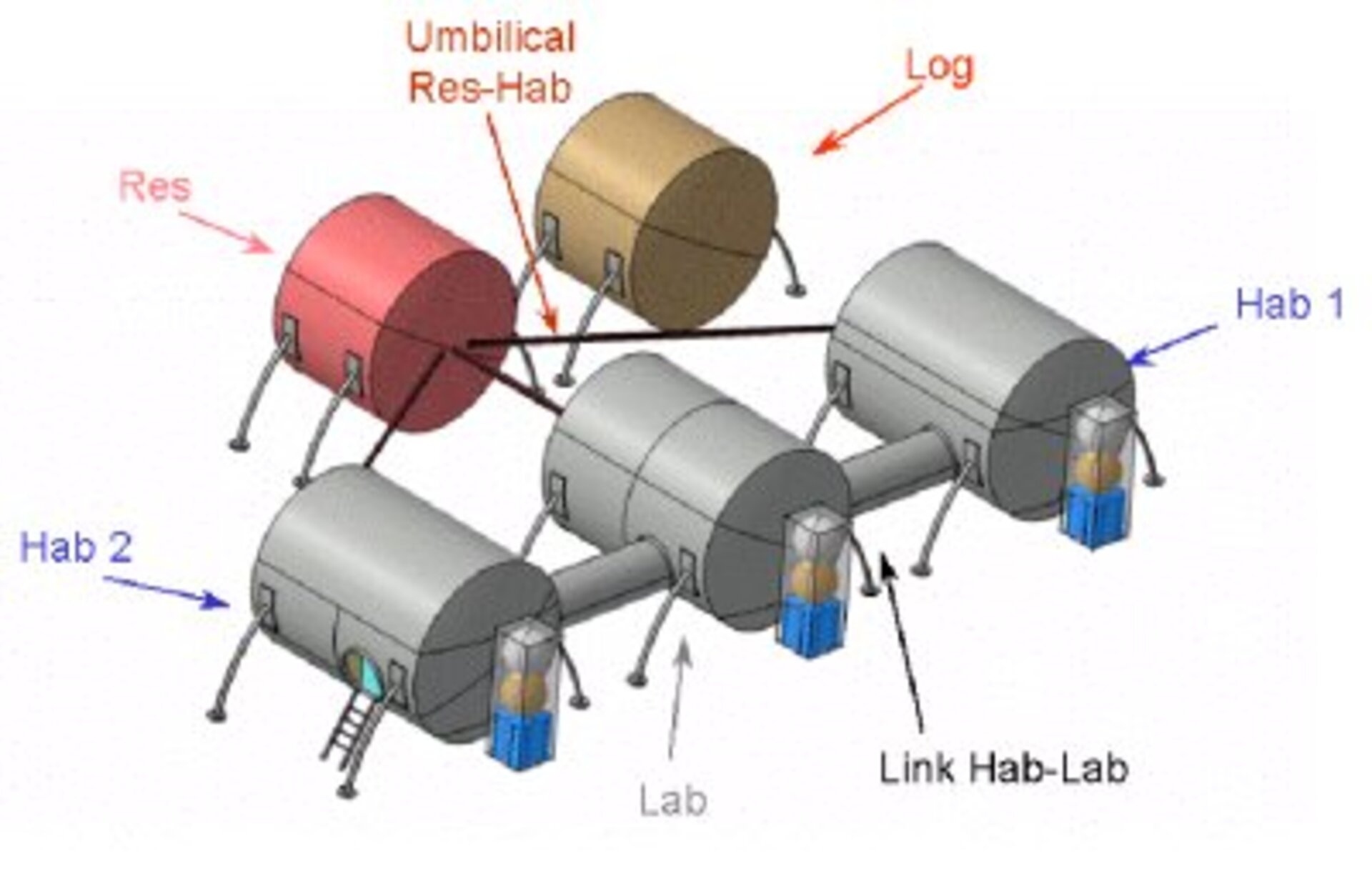RECENT STUDIES – LES:
Potential means to international lunar exploration
The Concurrent Design Facility (CDF) is currently engaged in a series of studies for the Directorate of Human Spaceflight, Microgravity and Exploration to determine potential ESA contributions to future international lunar exploration programmes.
The CDF Human Space Vision (HSV) study completed in December 2003 examined cargo transport options and crew mission options to determine a Moon mission scenario and a lunar base architecture comprising:
- Two Habitation Modules
- A Laboratory Module
- A Resource Module and
- A Utility Truck to facilitate base element transportation
These elements were largely based on technologies available from the Columbus programme and based on a future Ariane-5 capable of lifting 27 tonnes into Low Earth Orbit (LEO). The CDF assessed the design and technology development required to build up a Moon Base with man-tended capabilities enabling science and exploration on the lunar surface. The study also established development requirements for end-to-end European human spaceflight capabilities.

The next CDF studies were tasked to perform system trades of possible mission architectures relevant to lunar excursion exploration and a fixed lunar exploration base. Accordingly, assessments and programme requirements of the vehicles most common to those architectures had to be conducted.
The first Lunar Exploration Study (LES) completed in December 2004 designed in detail two separate vehicles:
- An Orbital Habitation Module or Hub and
- A Lunar Excursion Vehicle (LEV)
The Hub will provide support in polar lunar orbit for six crewmembers for six months. The LEV will provide de-orbit, descent, landing and ascent from the lunar surface, Hub-automated rendezvous and docking with the Hub and life support during these phases and 14 days surface operations for three crewmembers.
The LES-1 CDF study also provided preliminary designs of an Earth-to-Moon Crew Transport Vehicle and Cargo Vehicle to supply the Hub and assumed the future Ariane-5 27-tonne LEO capability.

The second CDF Lunar Exploration Study (LES-2) completed in May 2005 was charged to further analyse a Lunar Cargo Transport System (LCTS) to supply the Hub and supply a Lunar Surface Base or provide lunar surface precursor mission capability.
The design was constrained by using the baseline Ariane-5 ES vehicle and maximum use of Automated Transfer Vehicle (ATV) derived technology.
The CDF study concluded that the Hub supply vehicle will provide about two tonnes of cargo in an ATV-like environment. The lunar surface vehicle will deliver about one half tonne of payload for pre-cursor missions. Both vehicles will use a common Propulsion Module based on the Vinci engine.
More lunar exploration architecture elements will be investigated in on-going and future CDF lunar exploration studies ranging from pressurised lunar surface rovers to lunar surface base elements. In this way, the CDF will continue to support ESA's definition of European contributions to future lunar exploration.


